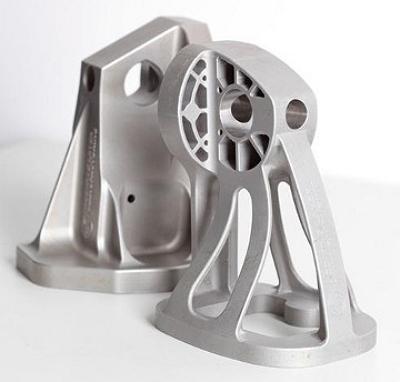The weight of accumulated parts is a critical factor in the aerospace industry’s efforts to build sleeker, lighter and more efficient planes. Shaving every available gram from the equation means manufacturers can save their airline customers fuel and help them cut back on carbon emissions.
Eric Masanet, the Morris E Fine junior professor at Northwestern University in the Robert R McCormick School of Engineering and Applied Science, now says it’s been confirmed that using 3D printed metal parts can reduce the weight of an aircraft – by up to 7% – and those are breakthrough numbers.
The research was funded by the US Department of Energy Advanced Manufacturing Office, and this case study took advantage of aircraft industry figures to analyze life-cycle environmental effects of using additive manufacturing and 3D printing to build lighter, and thereby more efficient, metal parts from cutting edge materials.
In addition to giving those higher performance metals and the parts built from them added value, the case study also found 3D printing technology is critical in reducing manufacturing waste. In practice, it also means using additive processes will conserve thousands of tons of expensive aluminum, titanium and nickel materials.
“The airline industry is an early adopter of 3D printing,” Masanet says. “The main driver is that aircraft require specialized lightweight metal alloys that can be very costly to process.”
 According to Masanet, his team’s analysis also pointed up the fact that 3D printed and additively manufactured components cut the need for energy to produce them by as much as one-third to one-half when compared with conventional manufacturing methods.
According to Masanet, his team’s analysis also pointed up the fact that 3D printed and additively manufactured components cut the need for energy to produce them by as much as one-third to one-half when compared with conventional manufacturing methods.
All in all, Masanet says AM and 3D printing key parts will cut aircraft fuel consumption by approximately 6.4% as well.
It’s all part of what the team says are untapped efficiencies in aircraft manufacturing.
“We have suboptimal designs because we’re limited by conventional manufacturing,” Masanet says. “When you can make something in layer-by-layer fashion, those constraints diminish.”
The case study was published in the May issue of the Journal of Cleaner Production, and Runze Huang of Masanet’s lab was the lead author of the paper. Matthew Riddle and Diane Graziano of the Argonne National Laboratory also contributed to the research.
According to Masanet, conventional methods of manufacturing aerospace parts can be unnecessarily wasteful. As an example, he says producing a 1-kilogram bracket for an airplane using conventional methods could require 10 kilograms of raw material..
While changes to wings and larger structural parts are currently beyond the technology, the researchers say AM is ideal to produce parts like brackets and hinges. One such bracket was reduced in weight from 1.09 kilograms to just .38 kilograms using AM techniques, and that translates to a major savings in a vehicle as large and complex as an aircraft.
Do you know of any other studies or initiatives which are aimed at improving efficiency with AM and 3D printing? Let us know in the AM To Reduce Aircraft Weight forum thread on 3DPB.com.
Subscribe to Our Email Newsletter
Stay up-to-date on all the latest news from the 3D printing industry and receive information and offers from third party vendors.
You May Also Like
Kings 3D Introduces Five New 3D Printers Ahead of TCT Asia
In the weeks leading up to TCT Asia, the 3D printing scene in China is already bustling with activity and product promotion. Among the companies taking part is stereolithography (SLA)...
3D Printing Webinar and Event Roundup: April 28, 2024
In this week’s 3D Printing Webinar and Event Roundup, the Ceramics Expo is taking place in Michigan, Stratasys continues its advanced training courses, and SPE is holding a Polymer Characterization...
3D Printing Webinar and Event Roundup: April 21, 2024
It’s another busy week of webinars and events, starting with Hannover Messe in Germany and continuing with Metalcasting Congress, Chinaplas, TechBlick’s Innovation Festival, and more. Stratasys continues its advanced training...
Latest Earnings Overview for Australian 3D Printing Firms Titomic and AML3D
Australian 3D printing manufacturing firms Titomic (ASX: TTT) and AML3D (ASX: AL3) reported their financial results for the period from July to December 2023, marking the first half of their...

































